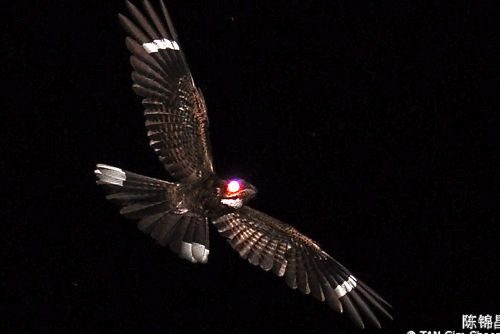Tan Gim Cheong’s image of a male Large-tailed Nightjar (Caprimulgus macrurus) taken at night shows one of its unique features, the eye-shine that shows up at night under artificial light. This eye-shine results from light hitting a reflective surface behind the layer of light-receptors in the retina at the back of the eye. The reflective surface helps increase the amount of light entering the eye, thus improving the bird’s vision at dusk and dawn as well as during moonlight nights.
There were then three male birds hovering round the street lamps, attracted by a termite hatch. The birds were taking turns swooping among the termites, feasting on them.
Note that there are white patches on the wings, tail and throat. These are not normally seen when the bird is sitting quietly on the ground and well camouflaged. Only when it is disturbed will these patches suddenly flash out and most probably give the intruded a fright.










2 Responses
I love this photo because my wife and I hear the nightjars on our 4 am morning walks. We live on a Camp in the jungle in Sumatra. We rarely see this nocturnal bird but it is always with us and occasionally we get a glimpse as it flies under a street lamp. So this photo really reflects our experience with the large tailed nightjar.